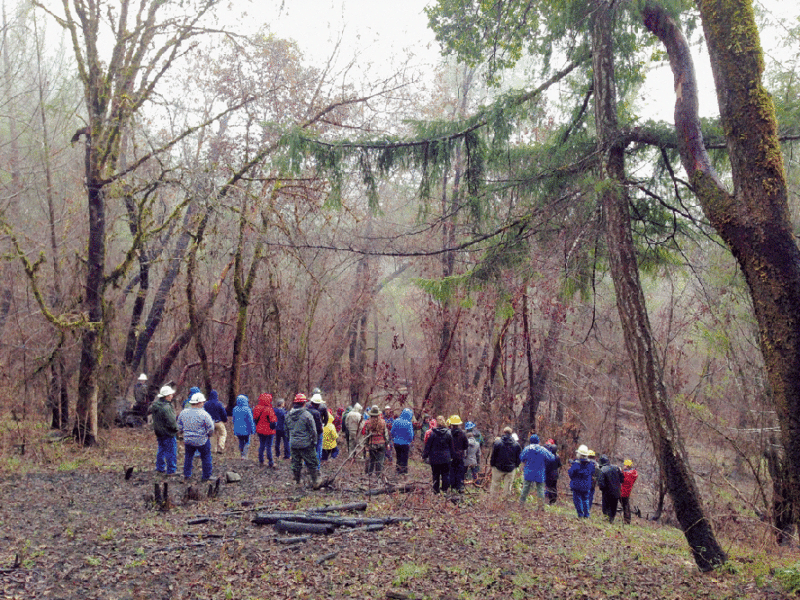Fire Strategies Teamwork in California’s Northwest

Environmental Protection Information Center
The time to adapt and live with wildfire is here. Many communities across the west are working toward that goal. The climate crisis is thrusting change upon urban and rural towns alike. As the flames and smoke become more familiar, our relationship with fire must progress. Here in the Pacific Northwest corner of California, strategic fire planning is underway.
EPIC participates in both the Smith River Collaborative and the Western Klamath Restoration Partnership (WKRP). The goals of the National Cohesive Wildland Fire Management Strategy, in part, guide both of these efforts. Completed in 2014, the national strategy aims for three goals: resilient landscapes; fire-adapted communities; and safe and effective wildfire response.
Based on 20 years of collaborative work, the Western Klamath Restoration Partnership (WKRP) formed in 2013—a watershed and fire management effort between the Karuk Tribe, Six Rivers National Forest, local watershed and fire-safe councils, and others. The mission is to establish and maintain resilient ecosystems, communities, and economies guided by cultural and contemporary knowledge through a truly collaborative process that effectuates the revitalization of continual human relationships with our dynamic landscape.
Working together towards shared values and zones of agreement, the partnership created a strategic fire plan for 1.2 million acres. This includes the entire Salmon River watershed, a portion of the Middle Klamath River, and parts of the Siskiyou, Marble Mountain, and Trinity Alps wilderness areas. It spans two national forests, the Klamath and Six Rivers, and much of the Karuk Tribe’s ancestral territory.

Historically, the Klamath Mountains experienced fire every 3 to 10 years. That includes cultural burning by Indigenous tribes practiced since time immemorial. Northern California is fortunate that fire is still a vital part of the living culture here today, as shown by the Karuk, Yurok, and Hoopa Valley Tribes and the Tolowa Dee-ni’ Nation. Use of controlled fire is spreading more widely today as understanding and cooperation grow. Traditional burning practices are helping to guide the strategies of our future.
Fire rejuvenates and balances forest ecosystems. The ecological benefits are immeasurable. The partnership aims to mitigate the current fire deficit by implementing their Plan for Restoring Fire Adapted Landscapes. Multiple values were spatially modeled over 1.2 million acres, resulting in a map highlighting prioritized areas most needed for treatment. The most critical places are around towns, neighborhoods, and along strategic ridge tops and roads.
Implementing Fire-Adapted Communities
Implementation of the first demonstration project just began this year. The Somes Bar Integrated Fire Management project consists of nearly 50 miles of shaded fuel breaks and hand lines and 5,500 acres of manual, mechanical, and prescribed fire treatments, concentrated around small communities (for more on this project, see Reckoning with Fire in the Klamath Mountains and the West). This and all future efforts will not only accelerate the development of fire-adapted communities and resilient forests, they will: integrate Traditional Ecological Knowledge; bring together food security, food sovereignty, and forest food and fiber resources; build local restoration stewardship and work force capacity; increase cultural and community vitality; include maintenance to uphold effectiveness; advocate fisheries restoration; maintain and restore viable native plant and animal populations; build capacity for practitioner-based research and monitoring programs; and include inter-generational education programs and activities.
Wildfires are sparking a national shift in law, policy, and opinion. Social change in coping with the climate and biodiversity crisis is beginning to ignite. With the mission to revitalize our human relationship with fire and our landscape, WKRP is establishing the way to increase the pace and scale of place-based restoration. Recognized as a national model, the partnership is helping to facilitate changes in fire and land management for communities across the west that are living with fire.
For more information: wildcalifornia.org
